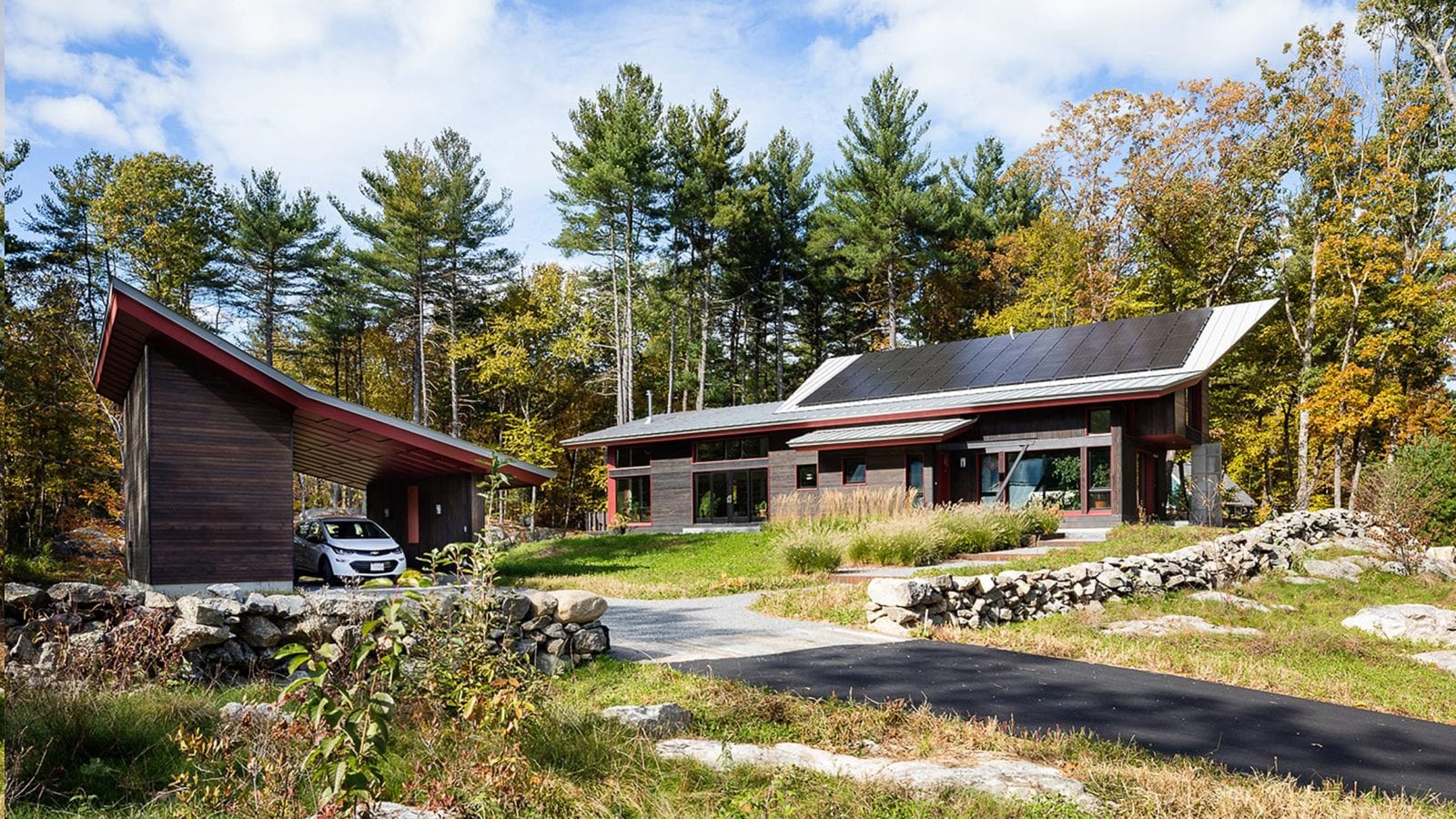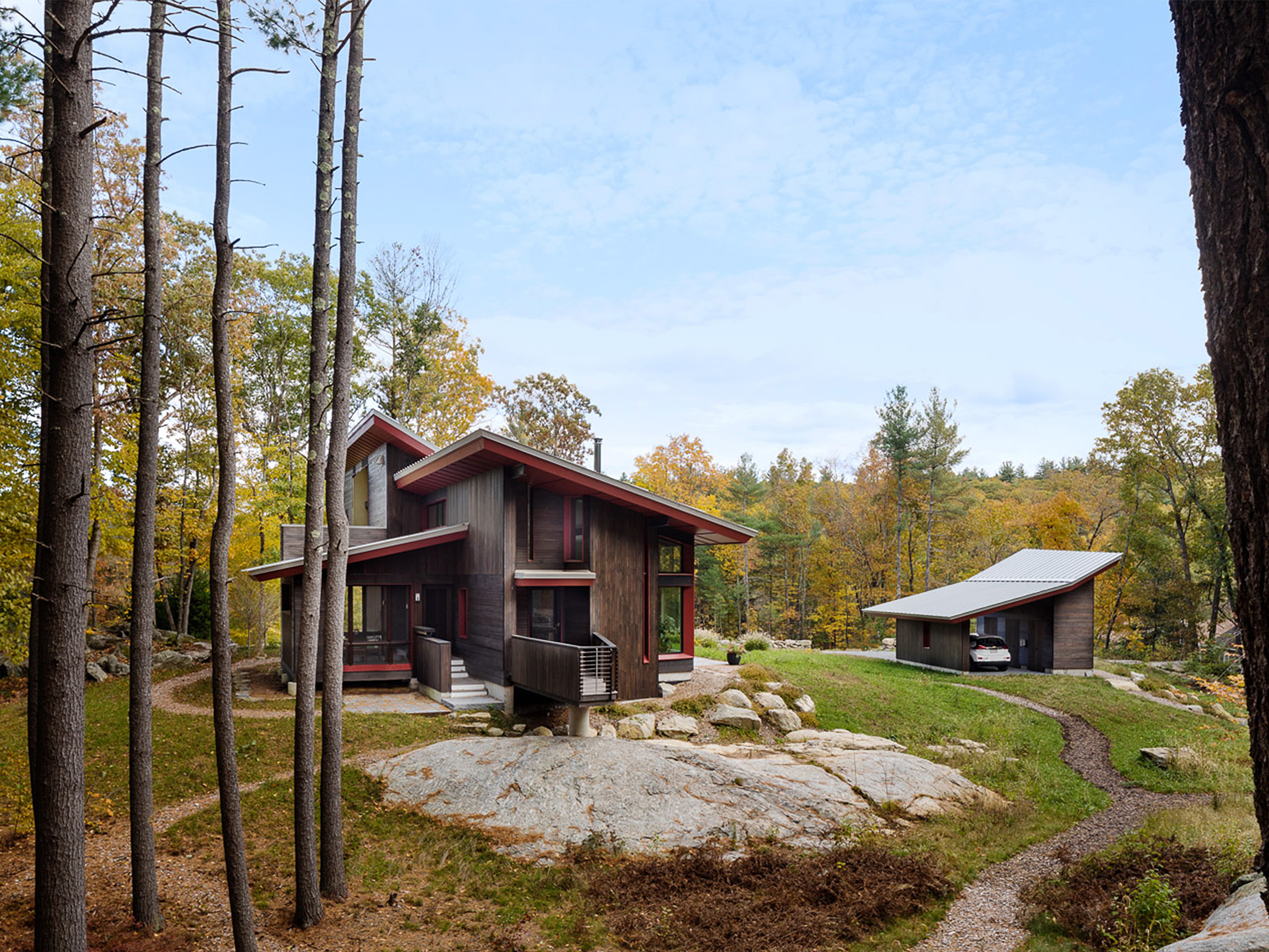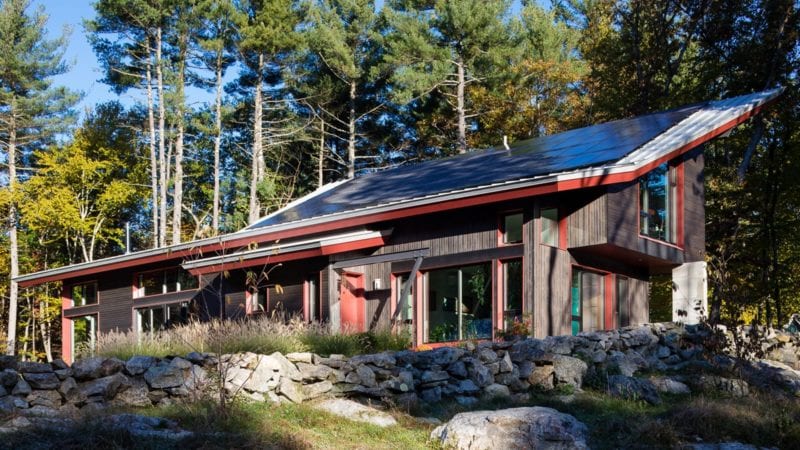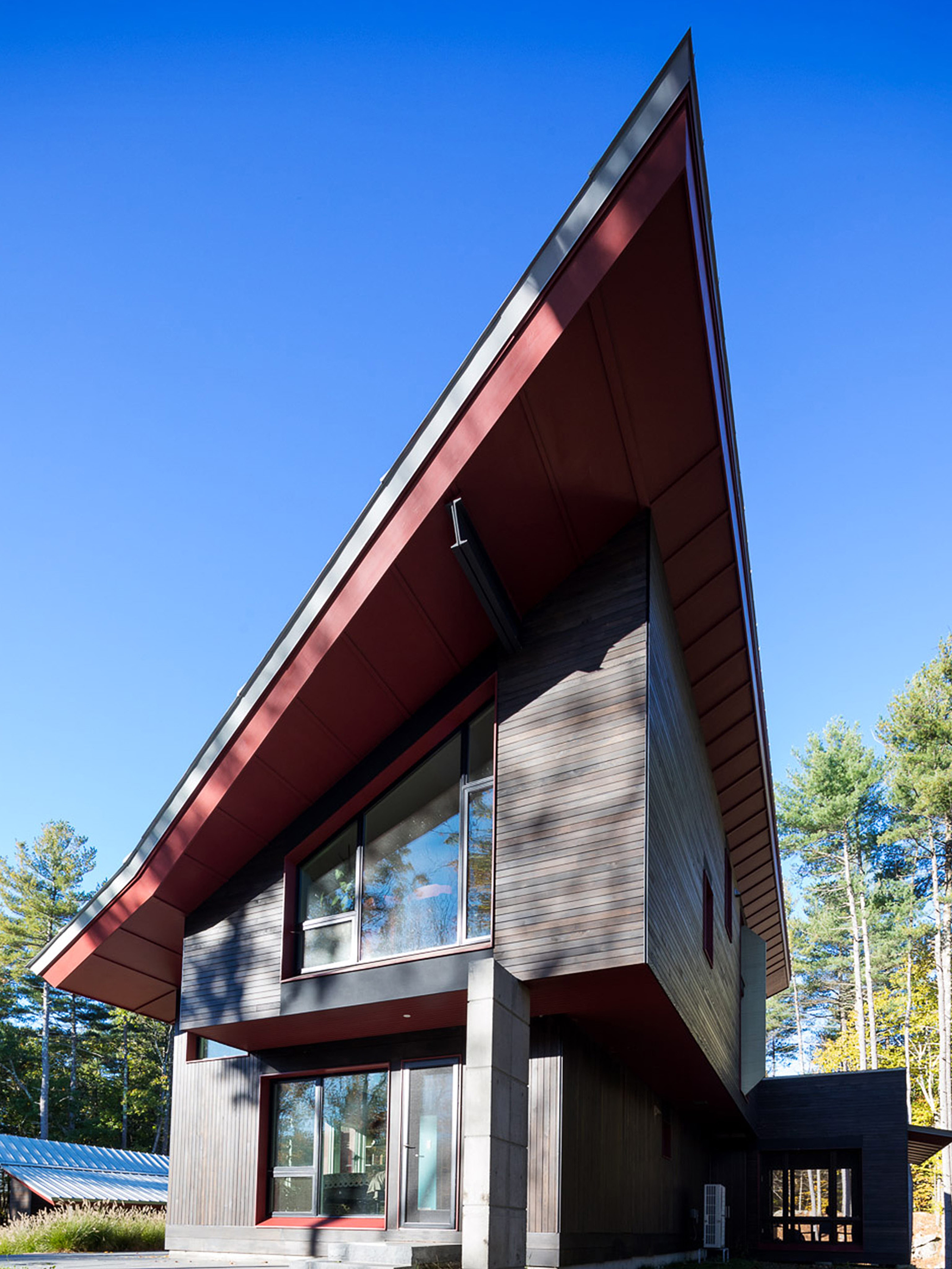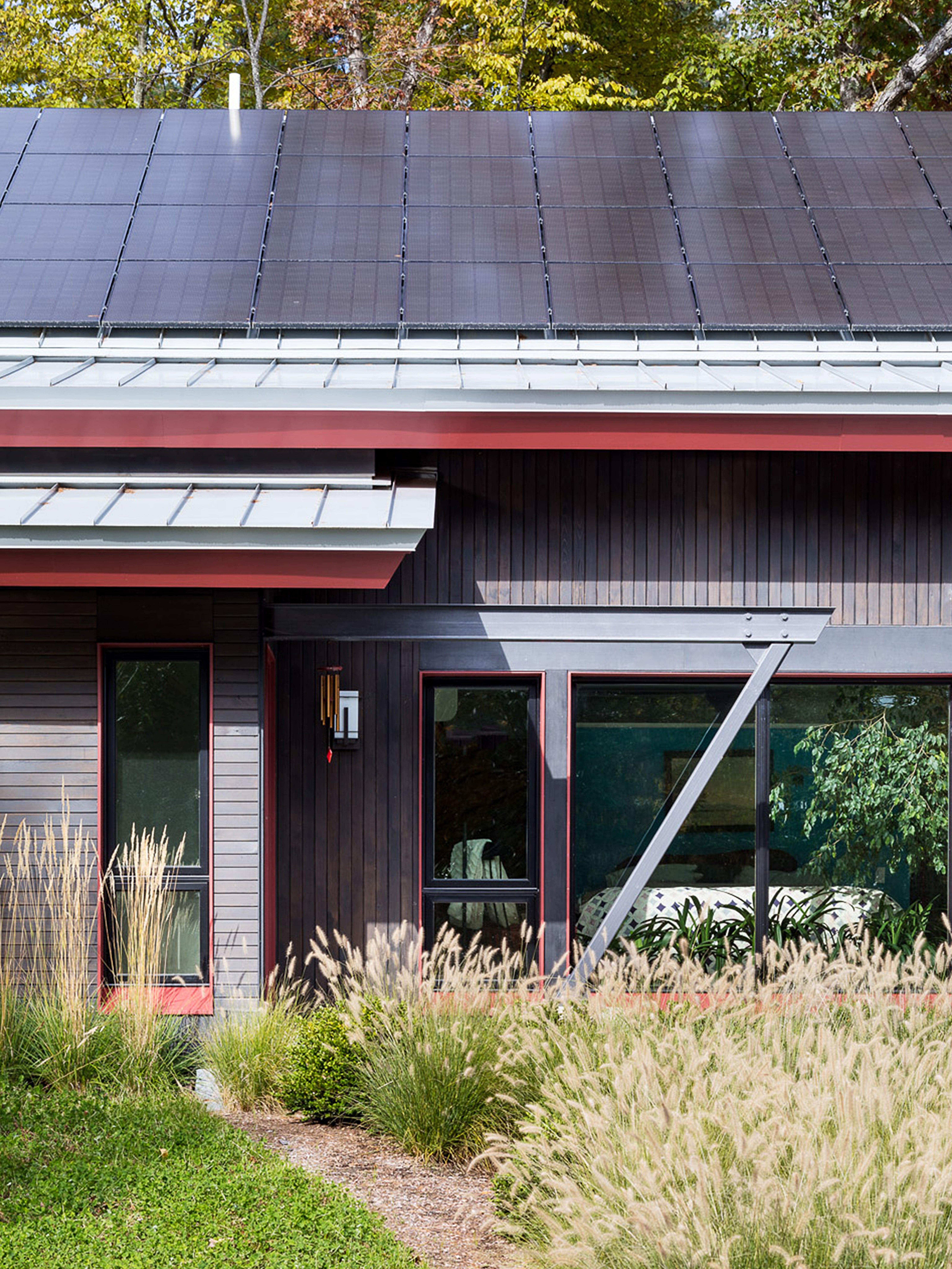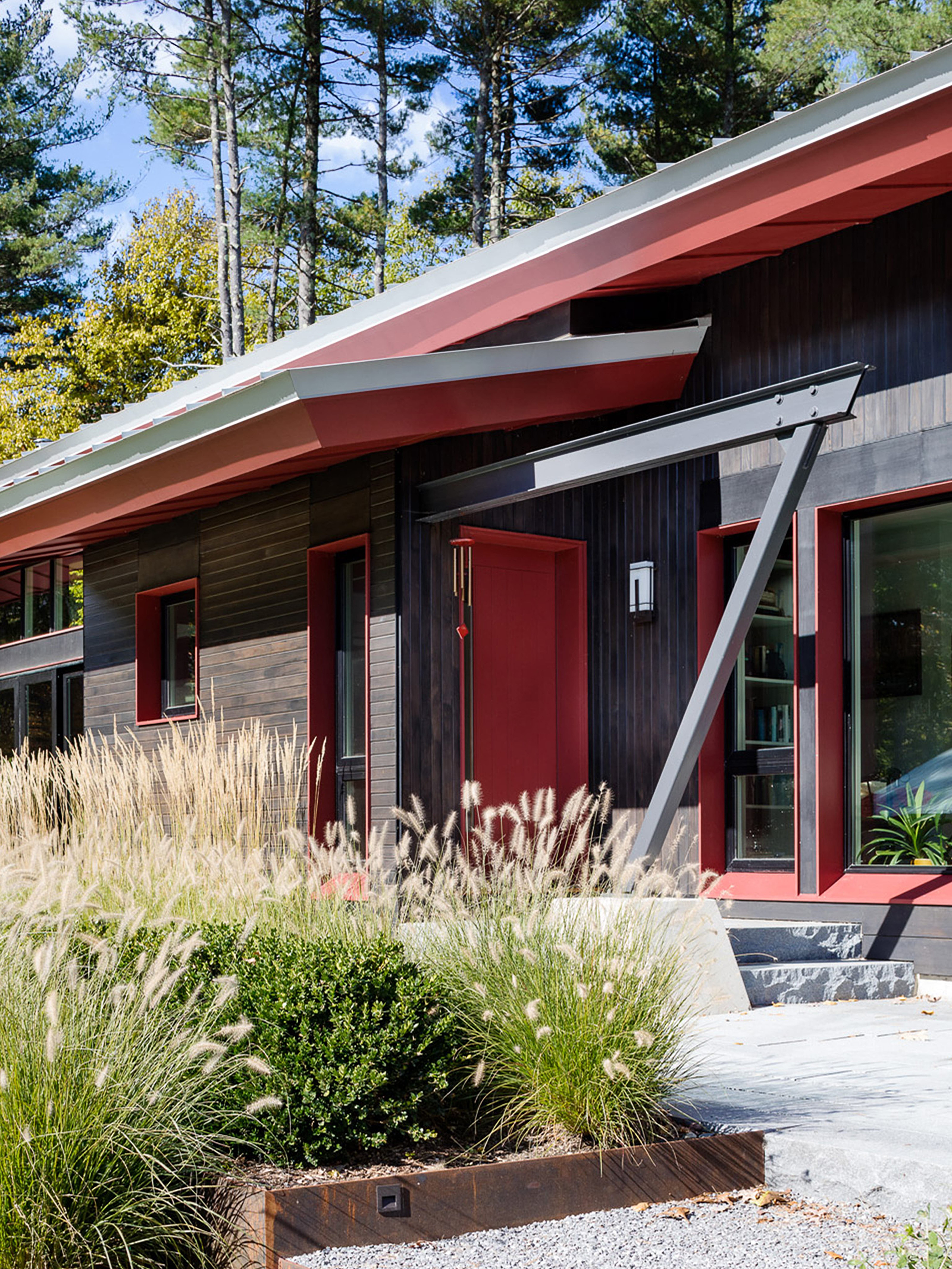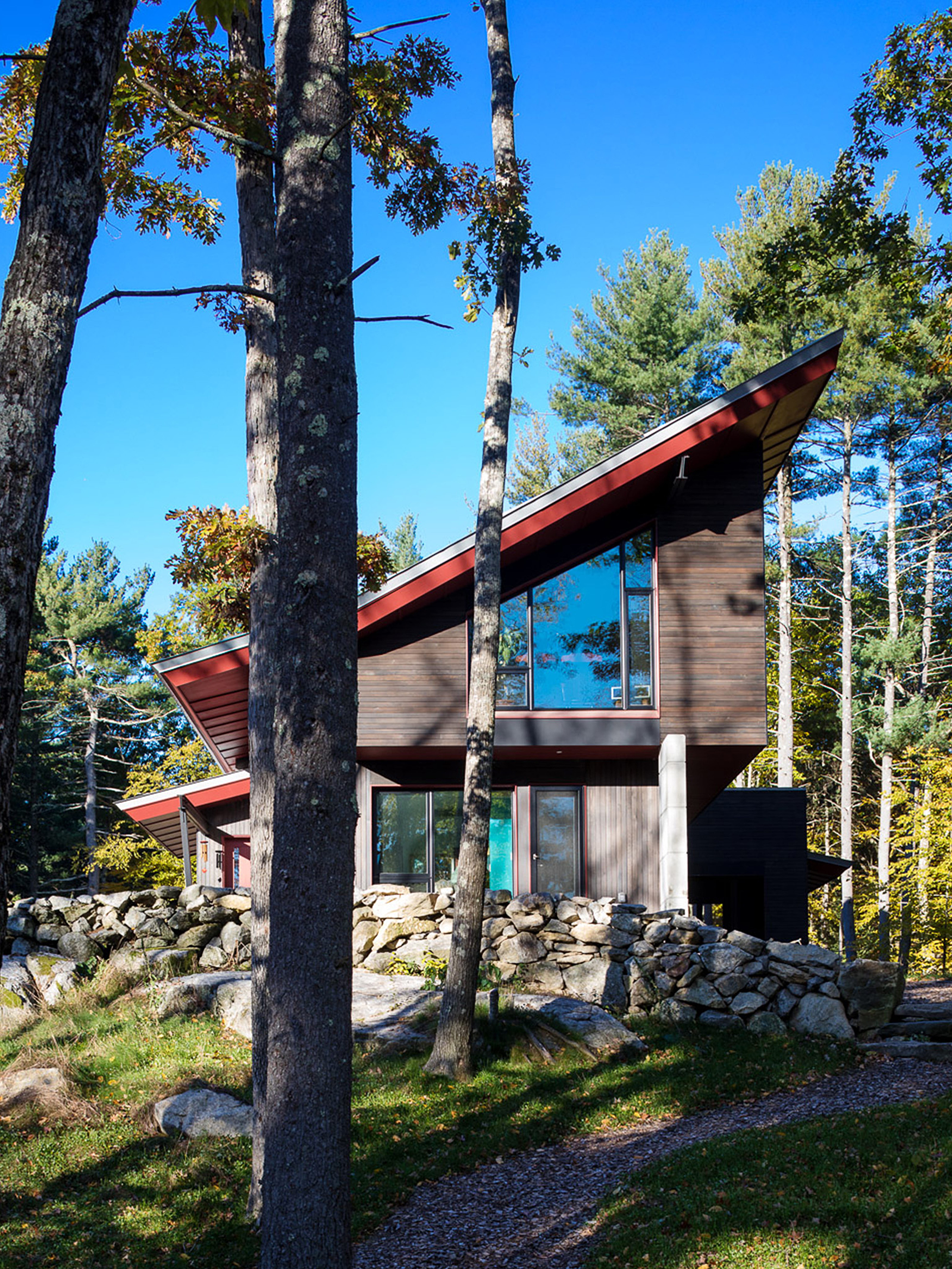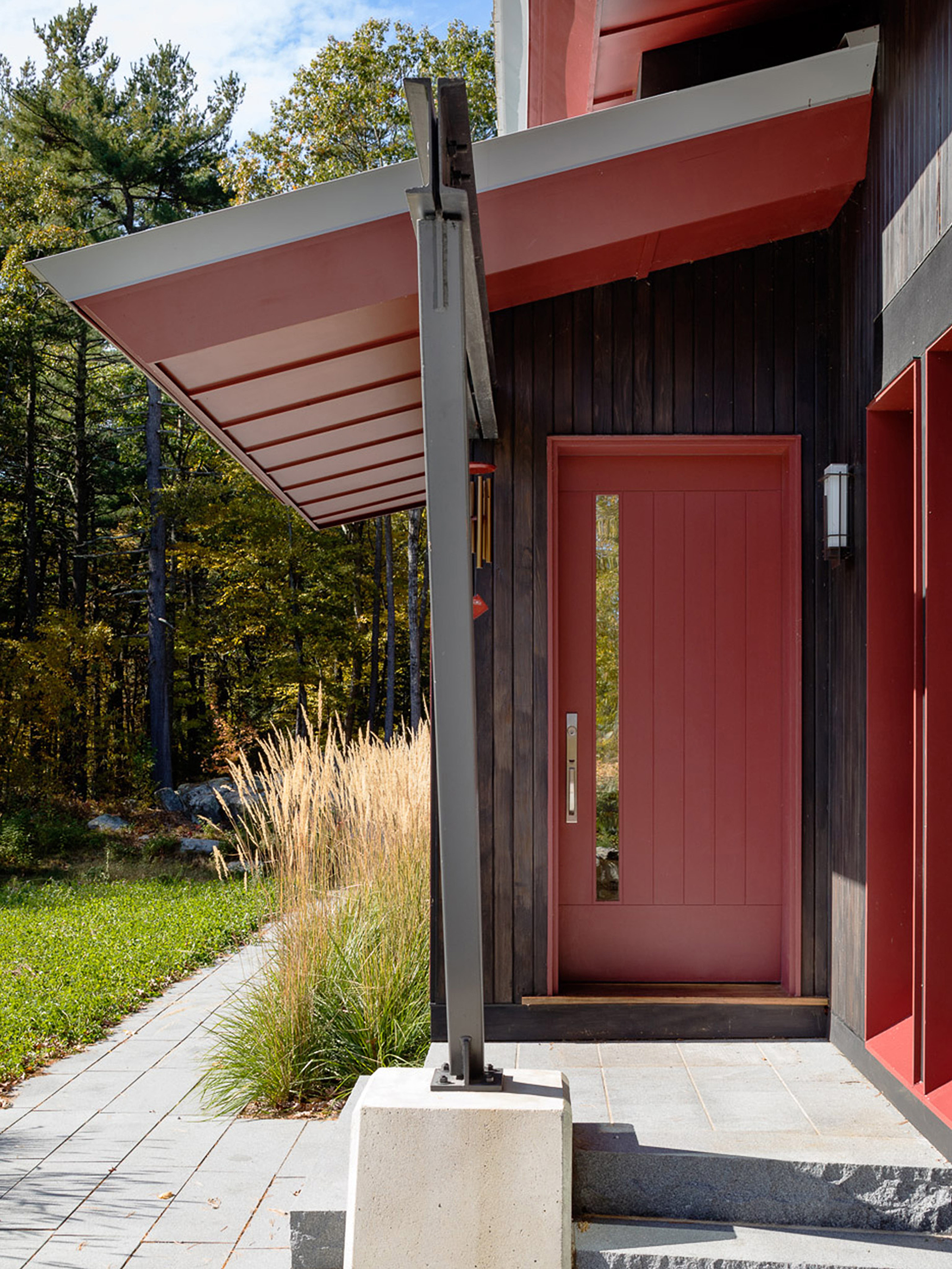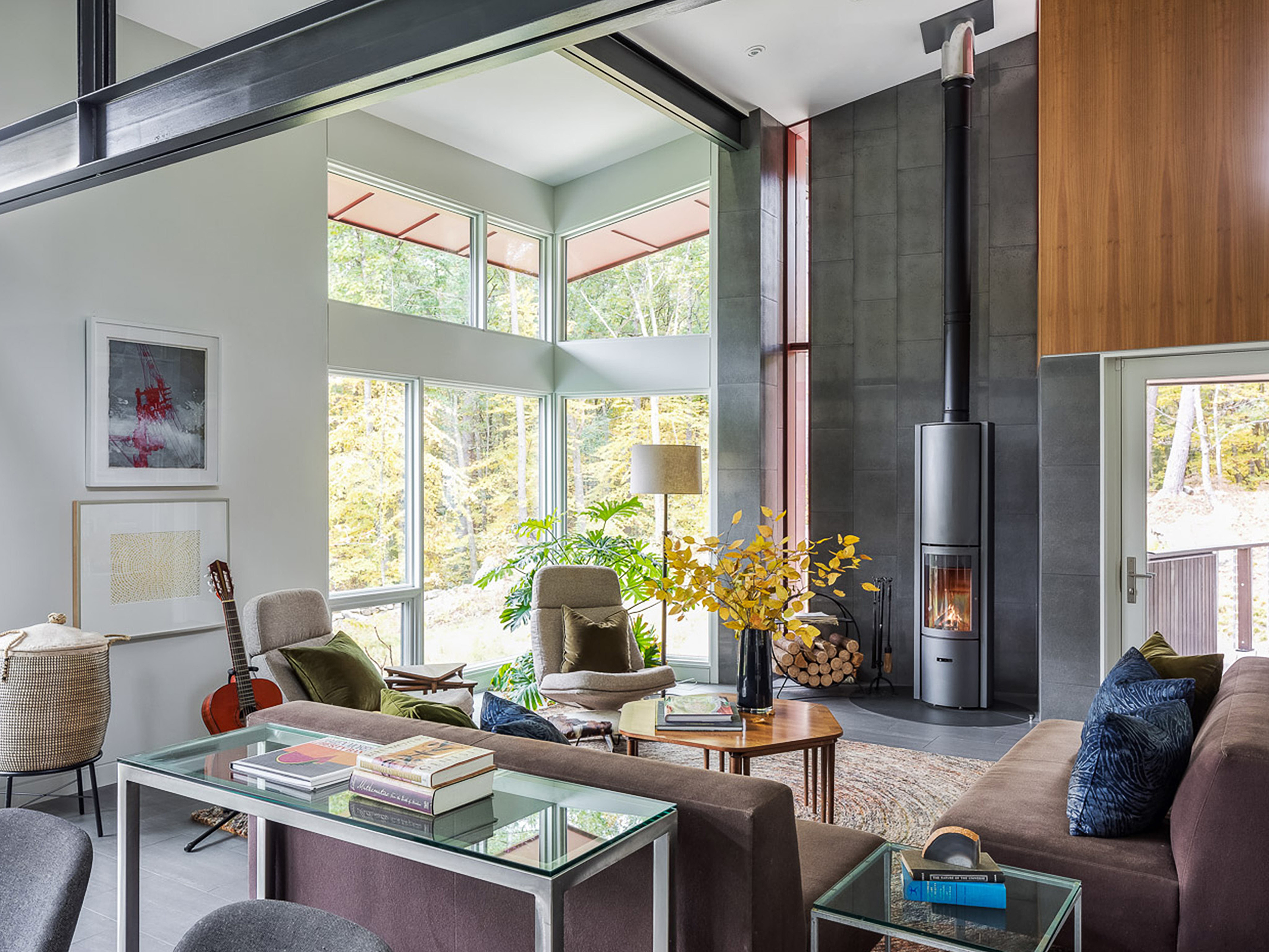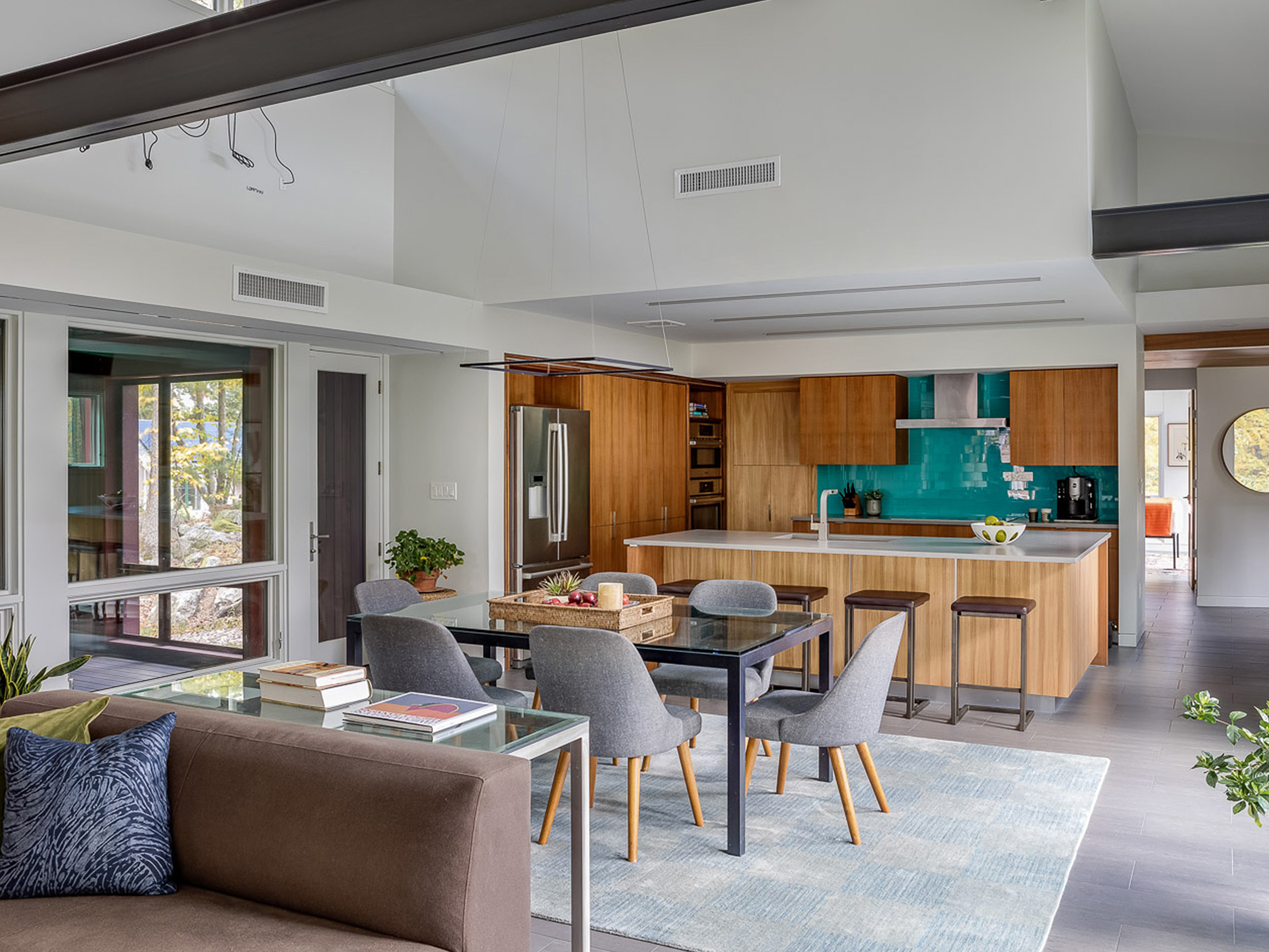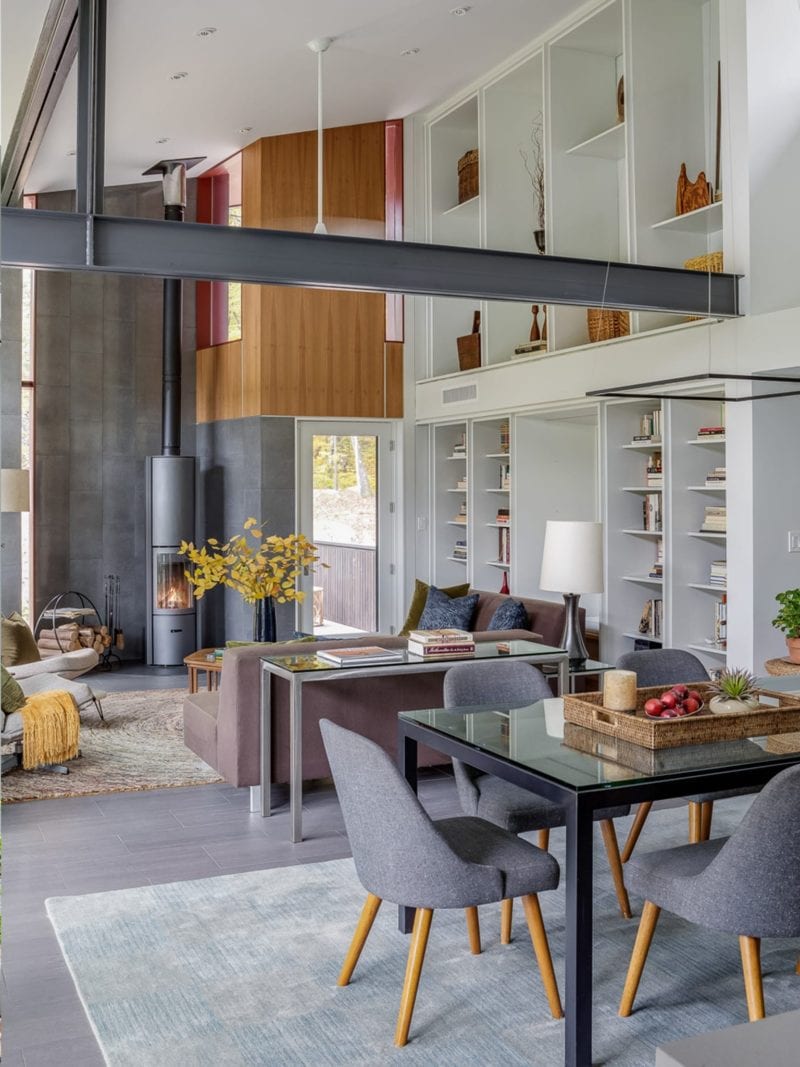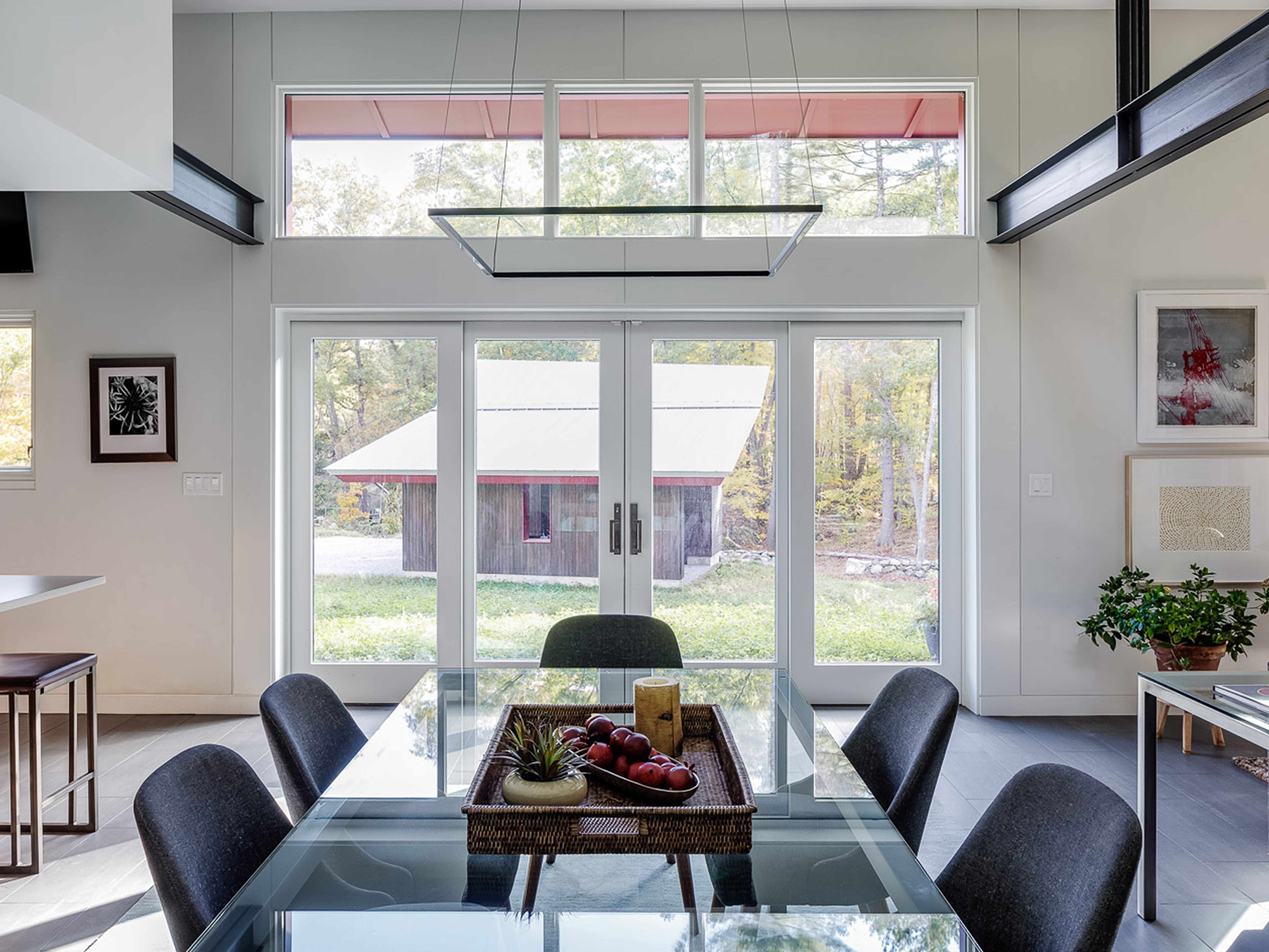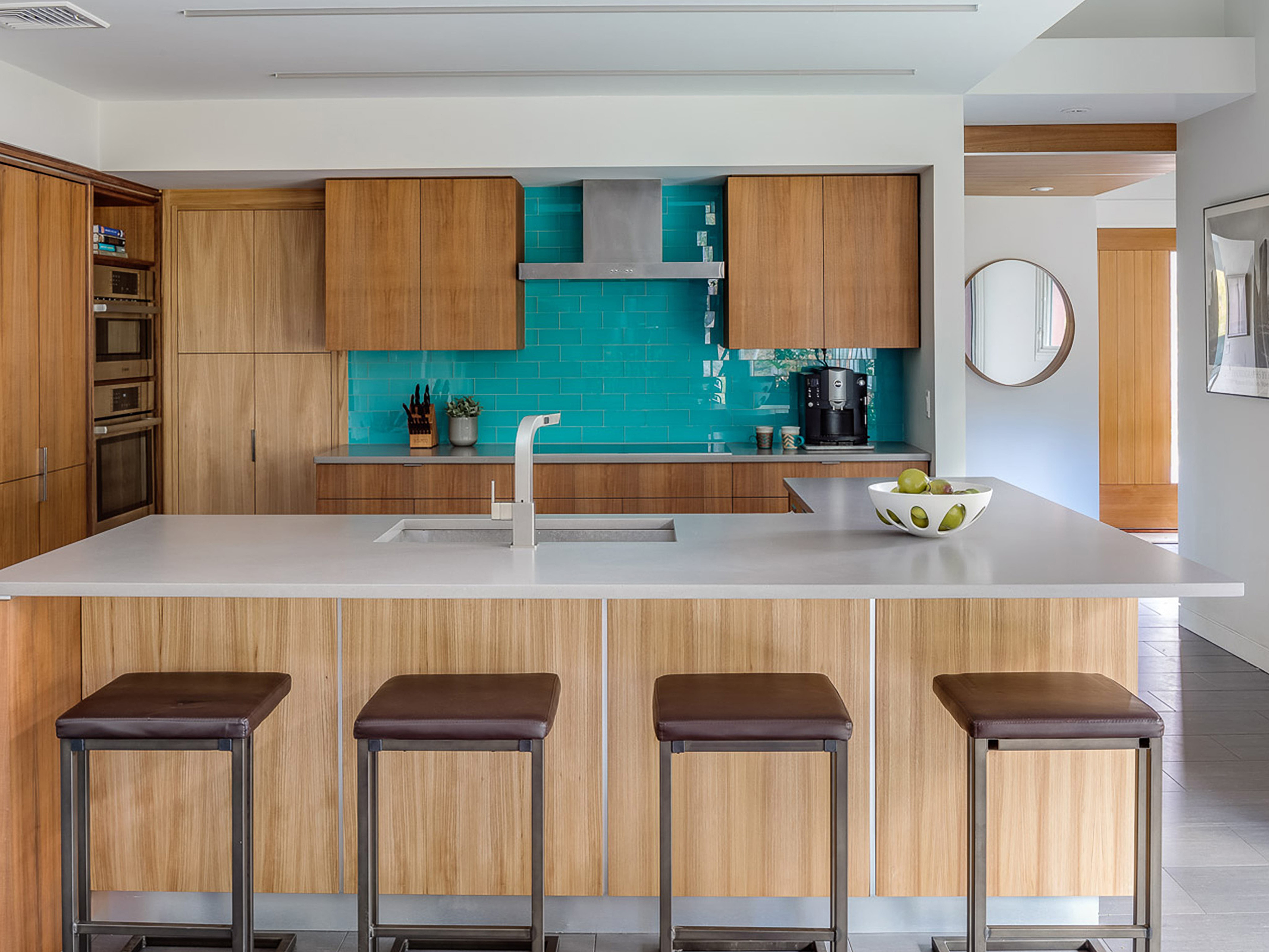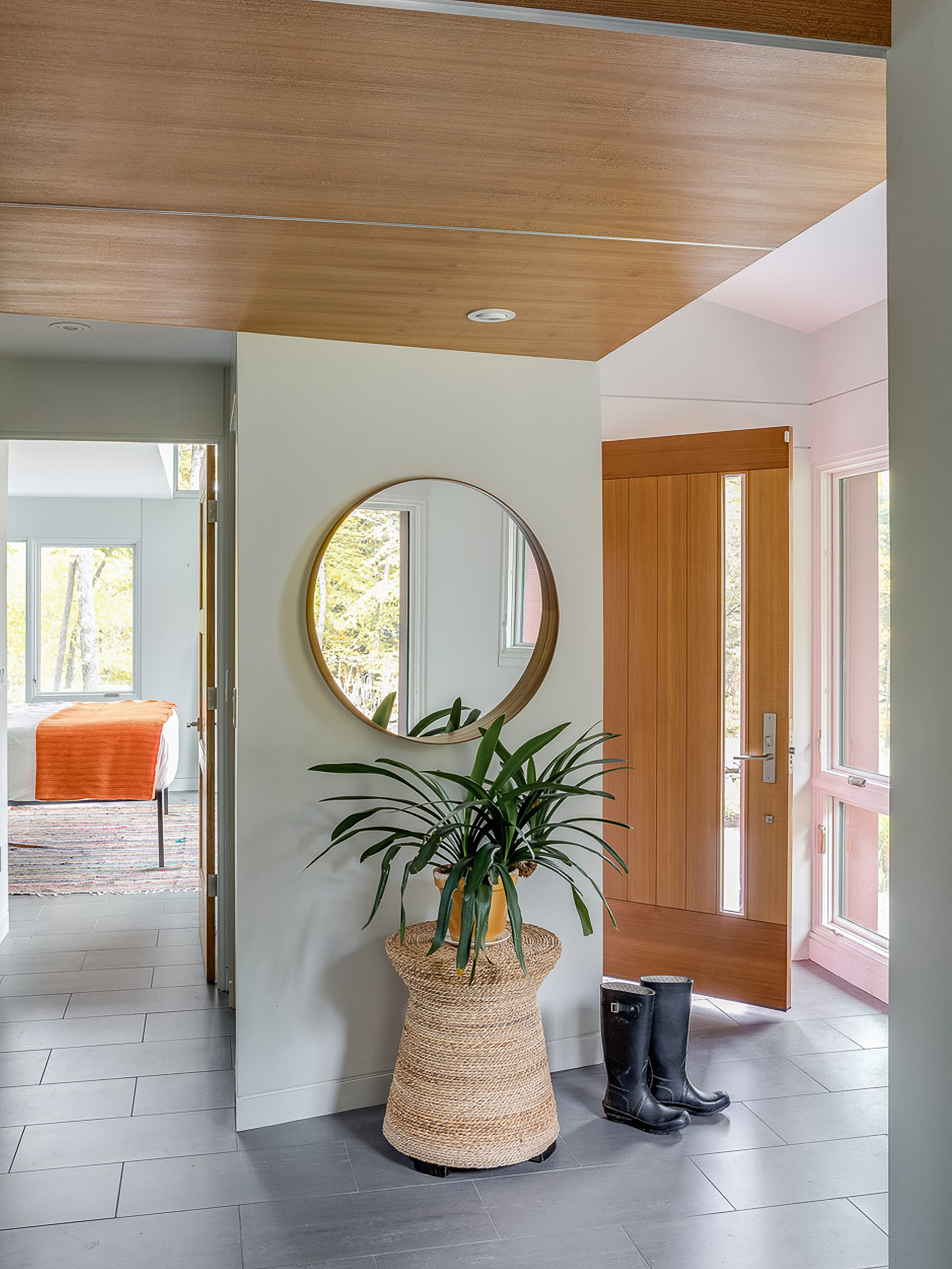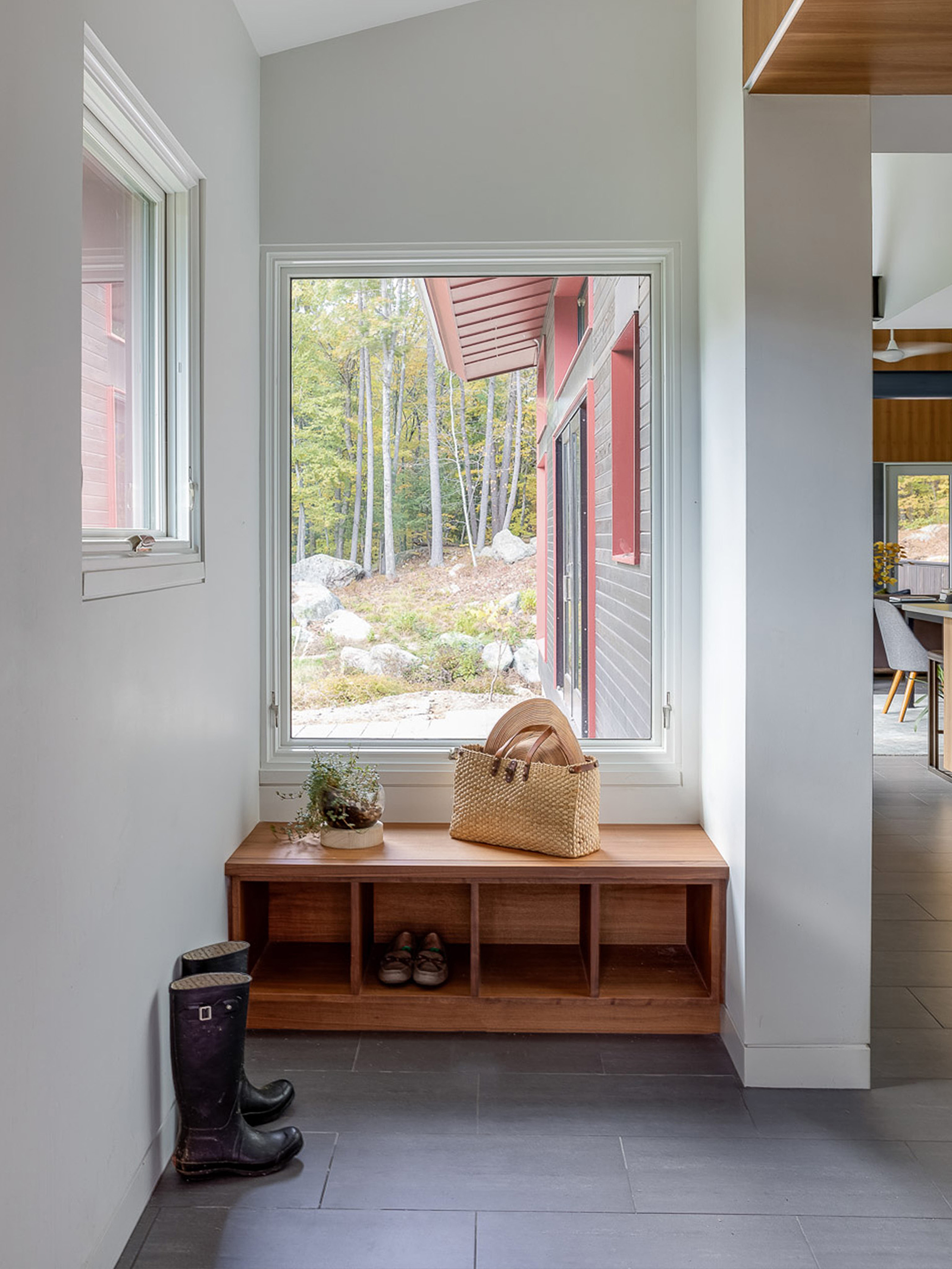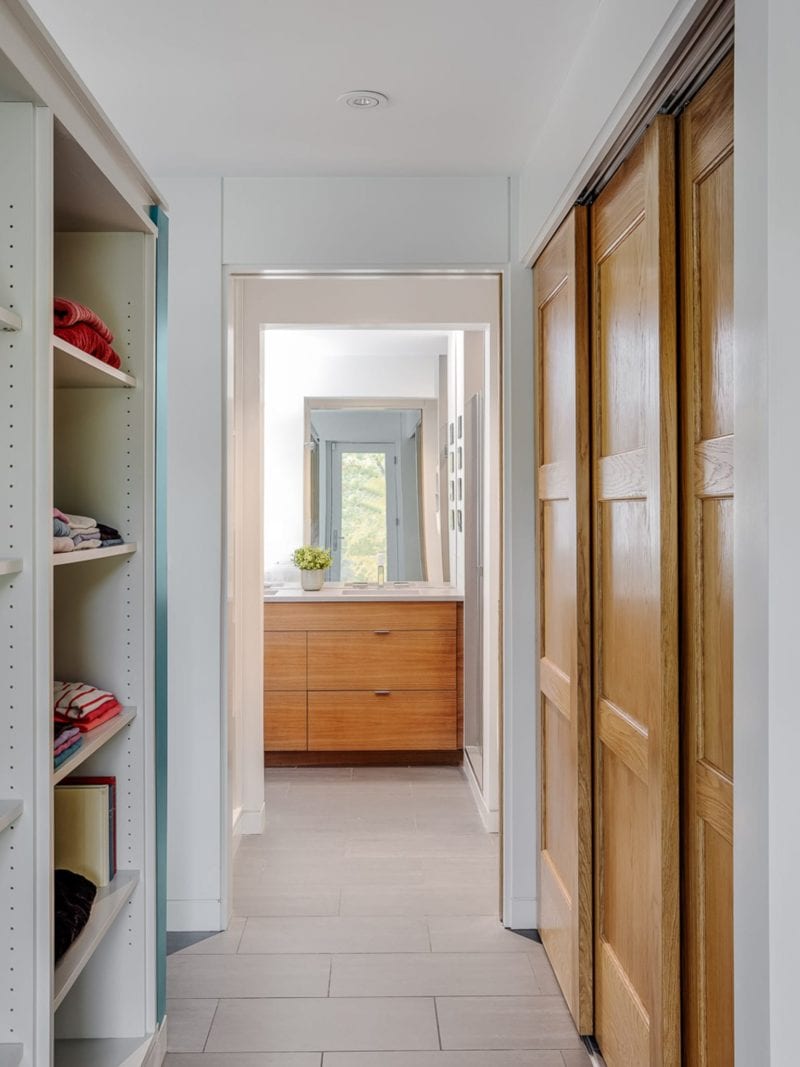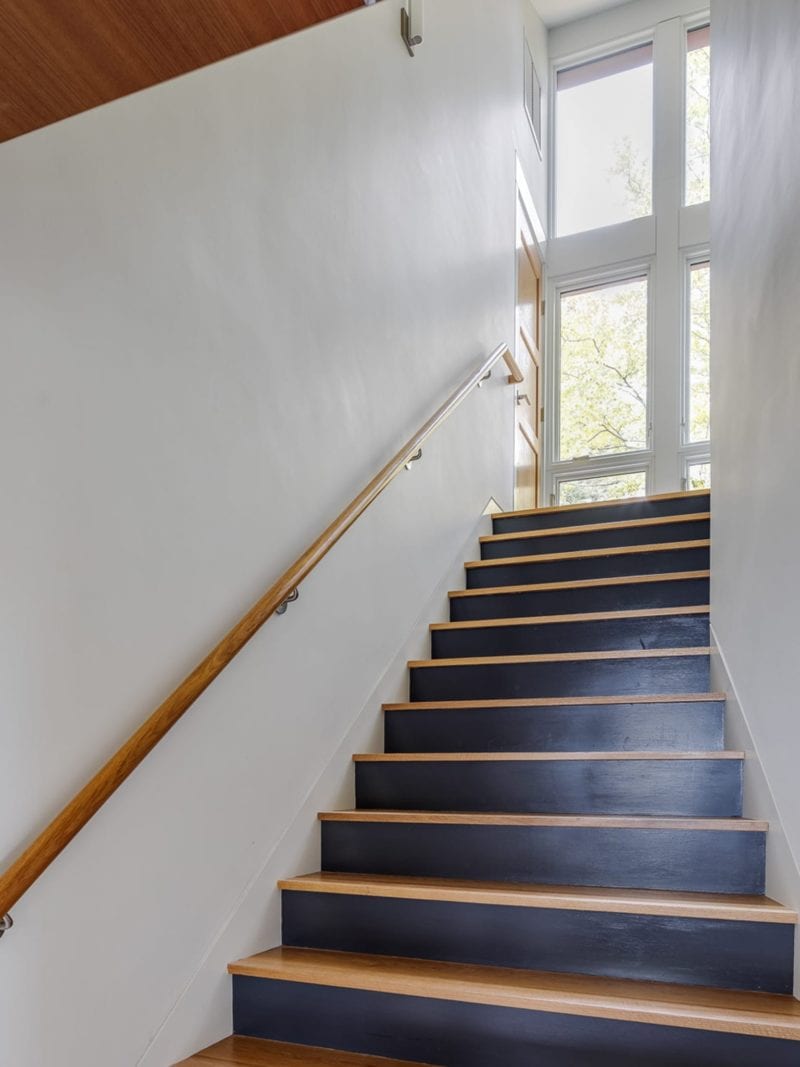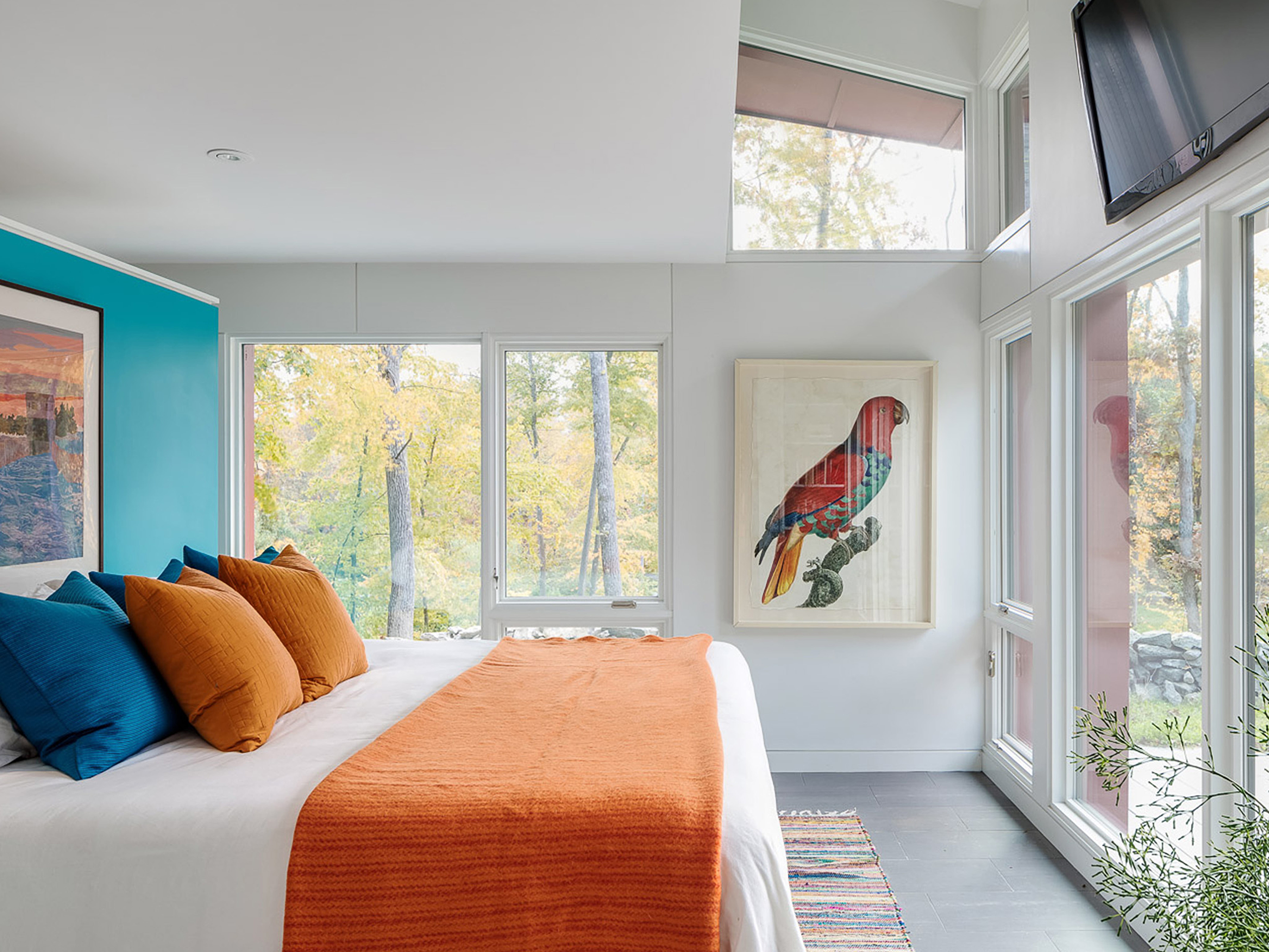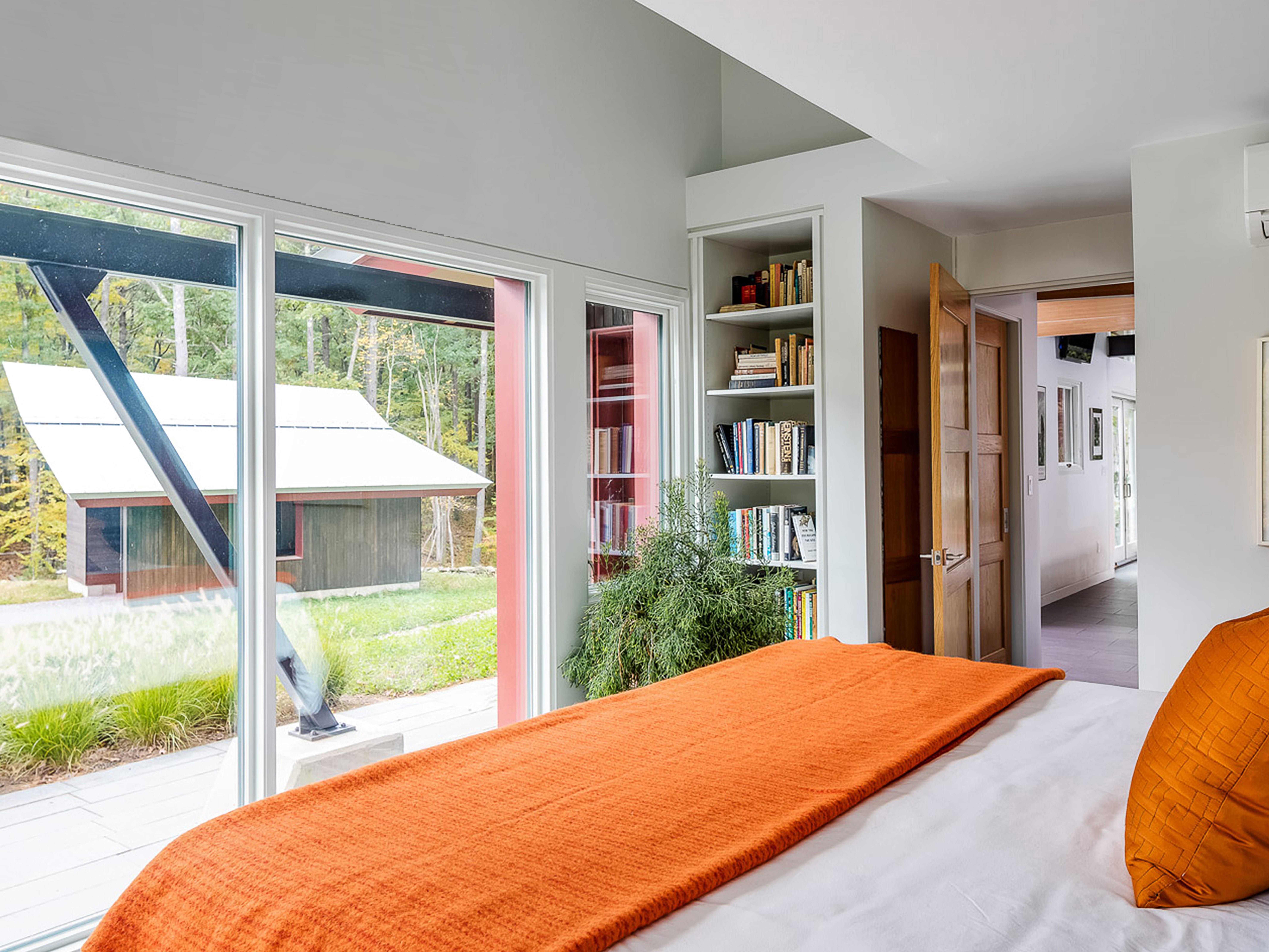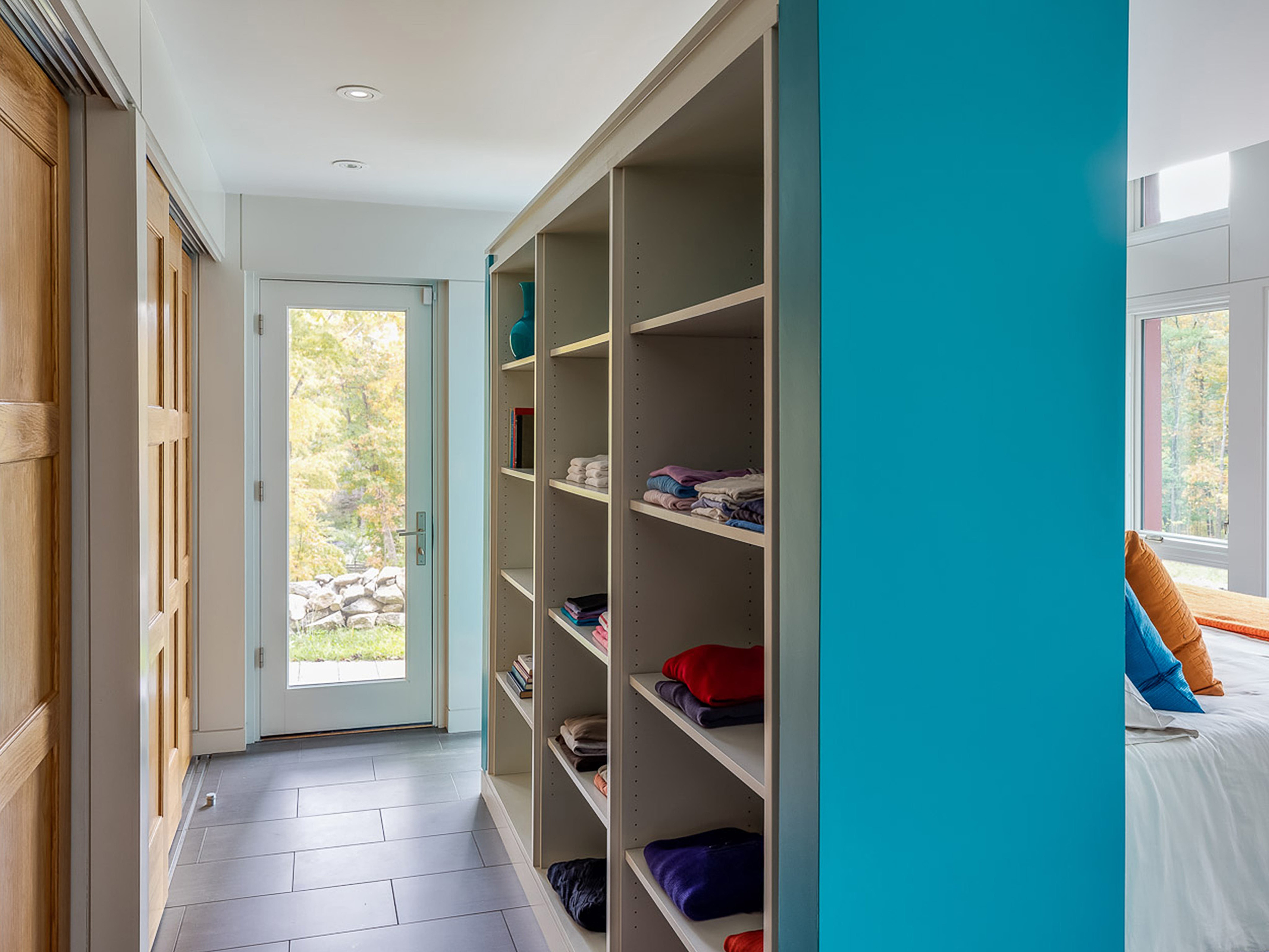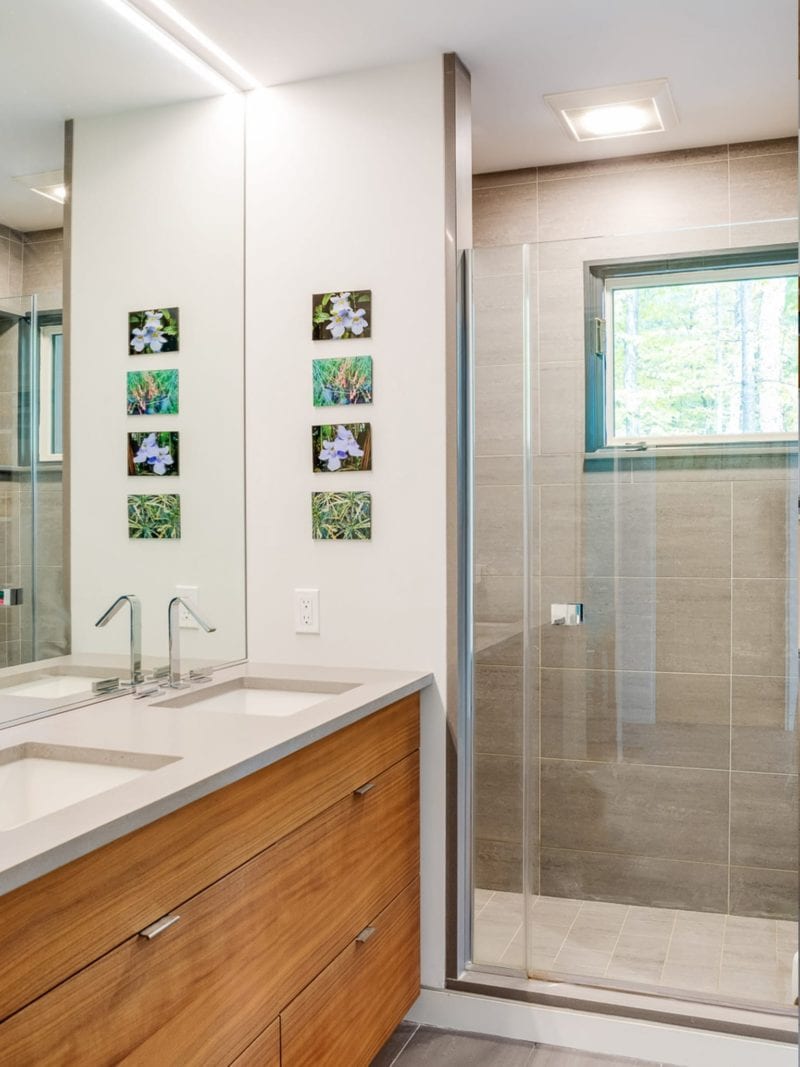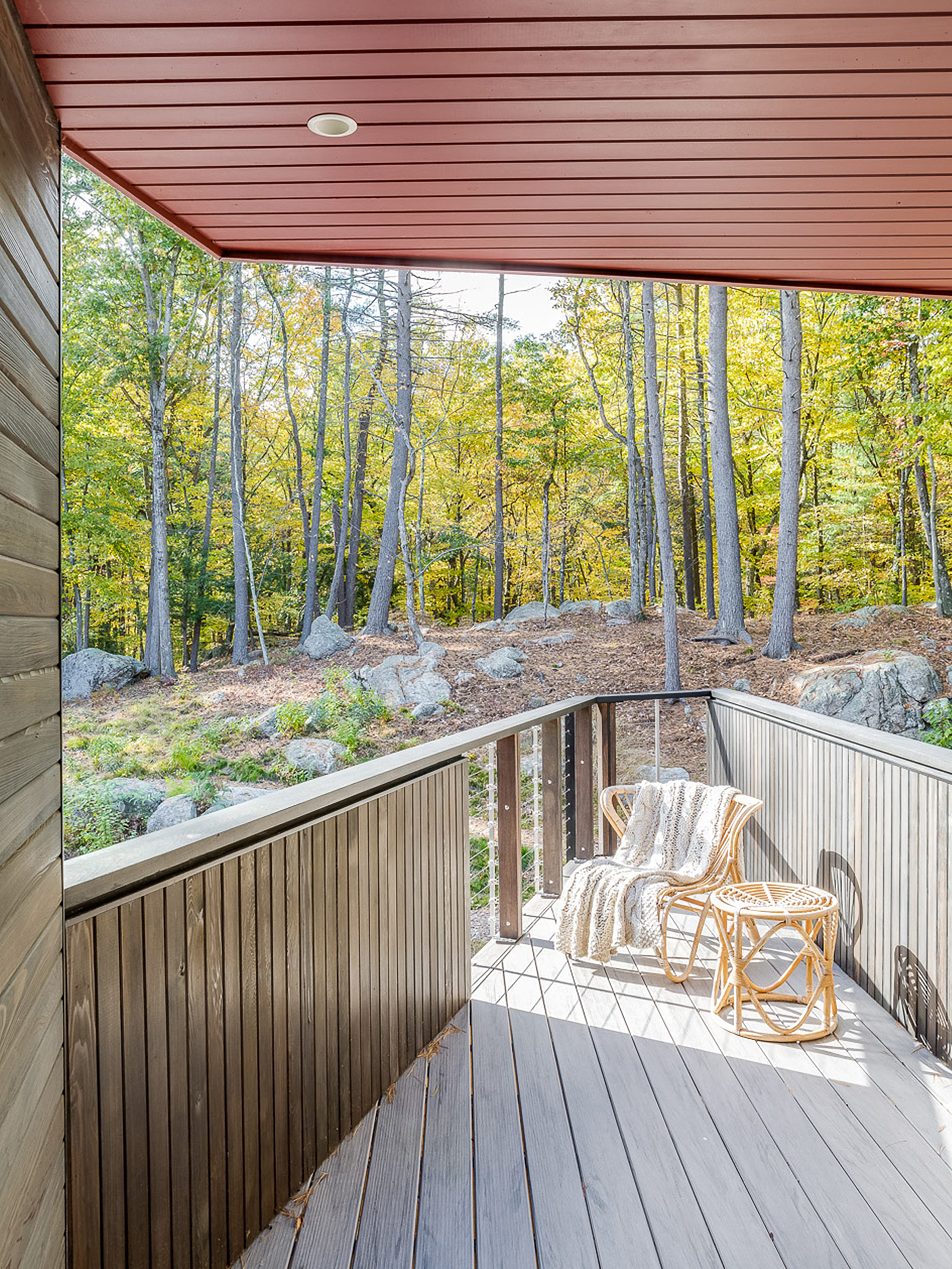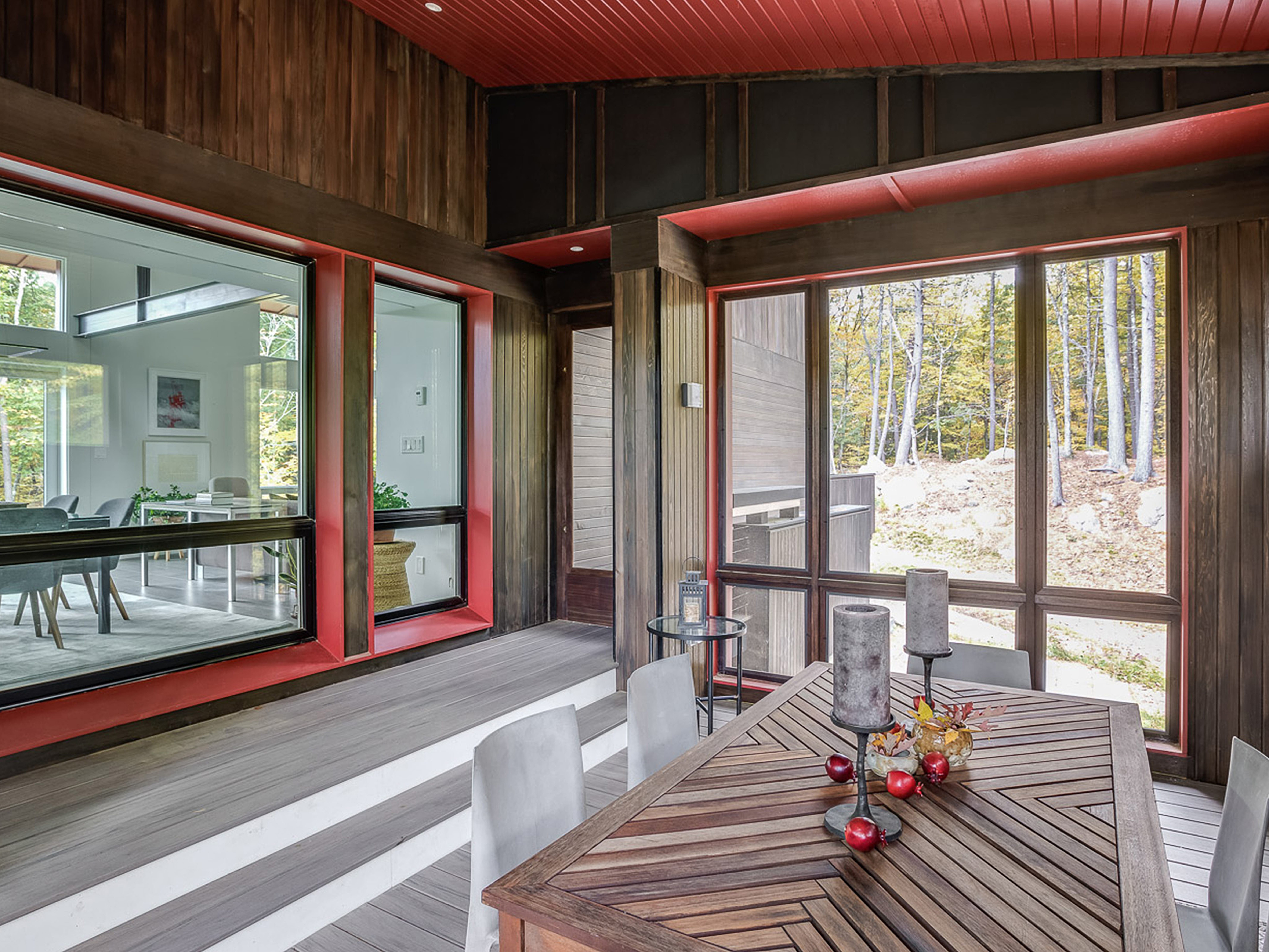Synopsis: This comfortable home, integrated into its natural setting in Harvard, Massachusetts, is fully powered by the sun with energy to spare for the owners’ electric car, kudos to a photovoltaic solar energy system by LG and two Sonnen batteries that manage energy intermittency. Passive design principles keep the house temperate year-round: deep overhangs shield interiors from overexposure and overheating, while open floor plans and high ceilings allow natural ventilation and airflow throughout.
Drawing from Nature
The Jenson-DeLeeuw House in Harvard, Massachusetts, a 2,000 SF energy-independent home completed in 2018, combines light-filled, comfortable living spaces with full integration into nature. It is carefully sited and angled on a gentle elevation amid a rustic rural landscape. This gives its occupants pleasant natural scenery while harnessing the sun’s east-west path for electricity generation through renewable-energy technologies and passive-house principles. This dual clean-energy system generates and conserves energy as lower-cost alternatives to standard HVAC systems.
Clean Energy Generation
The house’s energy network generates 21,000-kilowatt-hours annually through 56 LG photovoltaic solar roof panels and excess energy storage in two sets of 16kWh Sonnen batteries, which are integrated into a mini-split heating/cooling system. The roof is obtusely angled to optimize solar energy collection. By monitoring the energy generated and used daily, this system can store surplus energy for evening and bleak-weather consumption. With a certified HERS rating of –23, the house generates 23% more energy than a similarly sized home of its type, reserving ample energy at lower costs to the occupants. Furthermore, the batteries store enough to power the owners’ Chevrolet Bolt EV electric car, reducing auto exhaust pollution.
Passive Solar Design
The southern wall’s expansive windows flood the interiors with natural light and wintertime heat. Deep roof overhangs shield rooms from overexposure and overheating. Open-floor plans and high ceilings enable natural ventilation and airflow throughout. In winter, triple-glazed windows, insulated walls, and low-infiltration detailing optimize solar warmth. A wood stove in the living-dining-kitchen space provides supplemental heating on colder days.
Insulation and Integration of Walls
Huber Engineered Woods’ Zip System, a high-efficiency sheathing and stretch-tape network of structural panels, gives the walls superior insulation and eliminate moisture buildup and water seepage. Architecturally, weathered gray wood siding blends the house with its woodsy, rocky environs. The deck, patio, steps, and landscape walls visually reinforce the house’s bond with nature and dependence on nature’s nurturing forces for its occupants’ sustenance.
An Energy-Plus Prototype
This house resolves numerous sustainability dilemmas. It ends a lack of access to renewable energy when the sun is not shining. It generates sustainable energy without emitting greenhouse gases that contribute to climate change. It preserves the surrounding wooded landscape by eliminating the need to cut down trees to install a conventional utility infrastructure. As a prototype for similar net-zero-energy homes, this house demonstrates that, yes, we can create homes that generate more than they consume.

